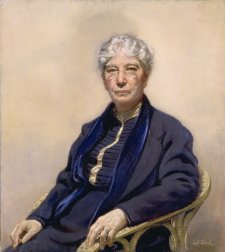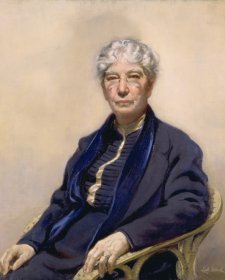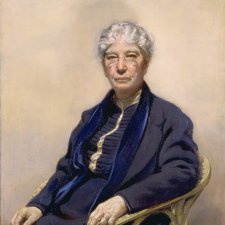Everybody, here I am, Mary Gilmore, asked to talk to you about Australia, my recollections. Of course, I go such a long way back, 95 years and now nearly going on for 96. I’ve seen the beginnings. I began myself with a slush lamp, went onto the tallow candle, then to the imported stearin candle, and then to kerosene lamps and from kerosene to gas, from gas to the electric light and now we have ahead of us the atomic to cover every mortal thing that we can think of. It seems an astounding thing for one person’s recollections.
I remember the poor old convicts, so many of them – they worked for my father, some of them. Some of them had backs that were ridged and ridged from the lash. I remember one station owner, a big rich man, and it was noted by his men that when they would go in swimming he’d sit on the bank and he wouldn’t go in. And one day without thinking, the poor man pulled his shirt off and jumped in. Father was in the water, so he caught hold of his arm and said, ‘Come on, we’ll go race to a different place’, and he took him right away from where the men could see him. His back was ridged too. And that was how the land was begun, how it was settled in the beginning, how the big Australia with its wide range of international linkings now, began. And those were the people who began it.
Well, we have the Blacks for our background for stories and we have the convicts. In later years, when my book The Passionate Heart was published, I wrote a piece of verse for it on that subject, because I was full of indignation at the idiocy of letting go in silence what was our basic history, and I still feel that way. It’s called Old Botany Bay.













